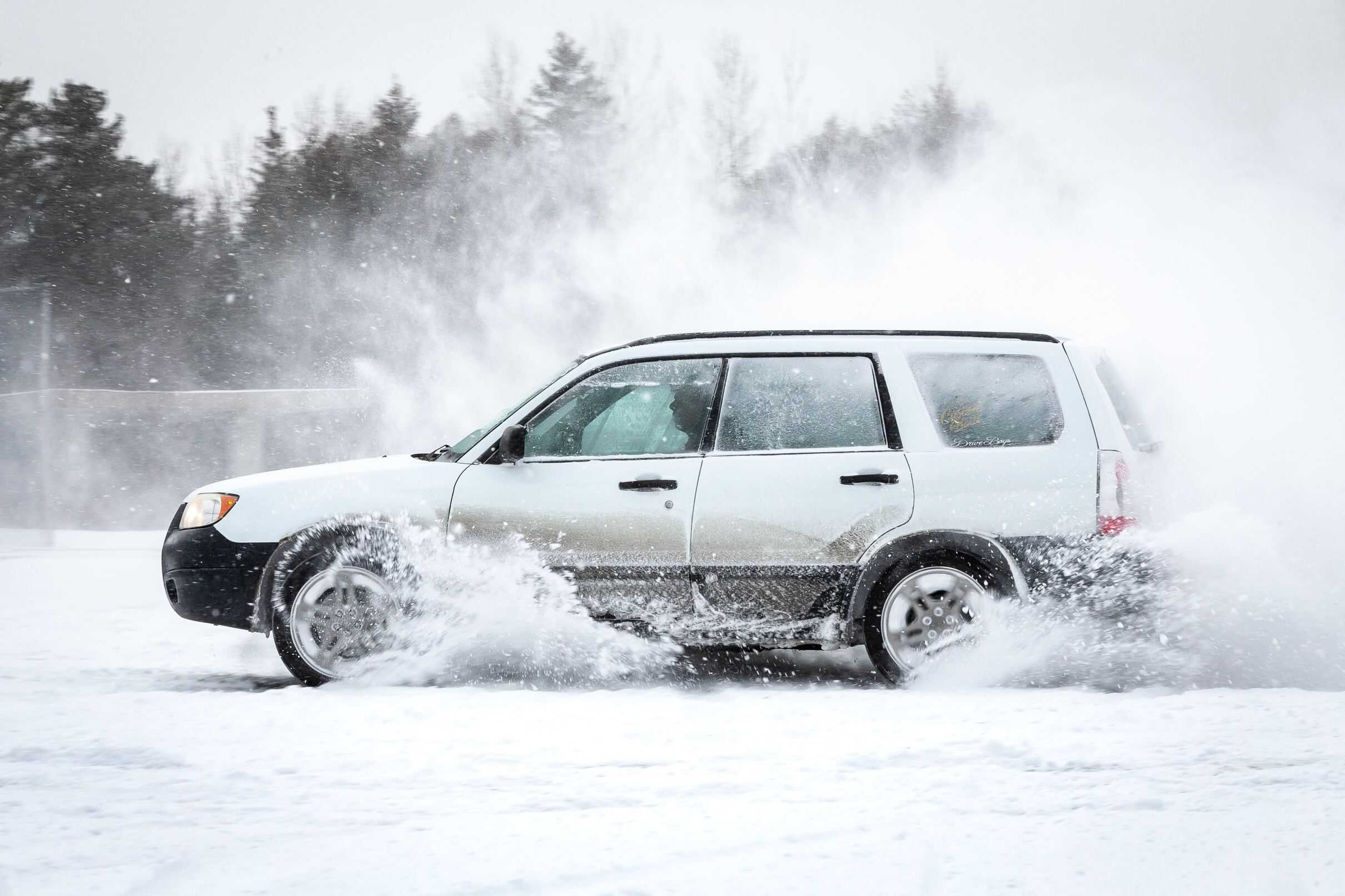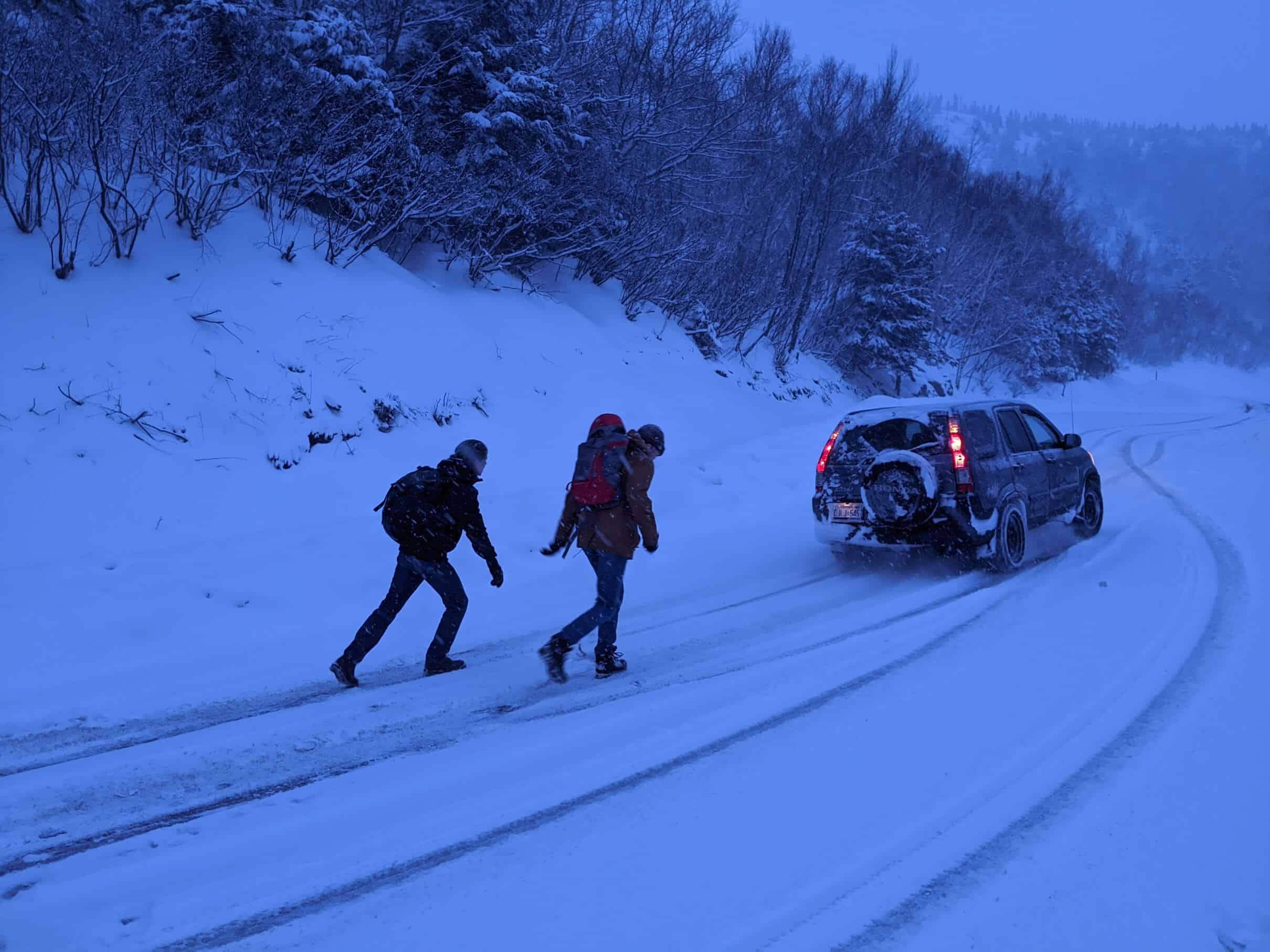Introduction
As winter takes hold across the UK, drivers are once again faced with the familiar challenges that come with the colder months. From icy roads and heavy rain to sudden snowfall and dense fog, winter weather can turn even the shortest journey into a real test of skill and preparation. With temperatures already dropping and forecasts predicting another unpredictable season, it’s more important than ever to ensure both you and your vehicle are ready to handle whatever the roads might throw your way.
Many motorists are taking proactive steps: fitting winter tyres, checking over their vehicles, or even upgrading to more winter-ready used cars. Whether you’re commuting daily or just making occasional trips, staying safe behind the wheel during winter requires a bit of planning and a lot of caution.
To help you navigate the season with confidence, we’ve put together our top winter driving tips for UK drivers in 2025. From essential vehicle checks to smart driving habits, these practical pointers will help keep you safe, secure, and stress-free on the road this winter.
1.How to Prepare Your Car for Winter in the UK

Before hitting the road, it’s essential to prepare your vehicle for winter conditions. Check the battery, lights, brakes, and tires regularly. Consider using winter tires, which provide better traction on icy roads. Ensure that your windshield wipers are in good condition and top up your windshield washer fluid with an anti-freeze solution to maintain visibility. Some vehicles can offer better driving safety than others, and people often make the switch over to an SUV to deal with the snowy conditions better. This option is the most costly, but we offer financing for all types of budget and credit circumstances, especially to those looking for bad credit car finance.
The British winter can be unforgiving on vehicles that aren’t properly prepared. Before you venture out into the frosty mornings and dark evenings, taking time to ‘winterise’ your car could save you from breakdowns and accidents when you need reliability most.
Here’s how to ensure your vehicle is winter-ready:
- Battery check – Cold weather puts extra strain on your battery. If it’s more than 3 years old, have it tested at your local garage. Nothing ruins a winter morning quite like a car that won’t start in sub-zero temperatures.
- Light maintenance – With shorter days and reduced visibility, working lights are crucial. Check all bulbs regularly and clean road salt and grime from lenses weekly. Consider upgrading to brighter bulbs for improved visibility on country lanes.
- Brake inspection – Slippery conditions demand responsive brakes. Have your brake pads, discs and fluid checked before winter sets in. Listen for any unusual noises when braking—they’re often early warning signs.
- Tyre preparation – Switch to winter tyres when temperatures consistently drop below 7°C. They provide significantly better grip in cold, wet and icy conditions. At minimum, ensure your standard tyres have at least 3mm of tread (the legal minimum is 1.6mm) and are properly inflated.
- Visibility essentials – Replace worn wiper blades immediately (they’re inexpensive but crucial). Fill your screen wash with a winter-grade solution that won’t freeze at -15°C or below. Keep a small bottle of de-icer and a scraper in your car.
- Fluid levels – Top up antifreeze in your cooling system to prevent engine damage. Most cars need a 50/50 mix of antifreeze and water during winter months.
For those finding their current vehicle simply isn’t coping with challenging winter conditions, upgrading to a more suitable car might be worth considering. Modern SUVs and 4x4s offer improved ground clearance and stability in poor weather and if you choose to finance your next vehicle with us it’s more affordable than you think. At ChooseMyCar we offer flexible financing options that are designed for all circumstances, including solutions for drivers with less-than-perfect credit histories. We understand that everyone deserves a reliable vehicle, especially during the most demanding driving season of the year.
2. Journey Planning Tips for Winter Driving in the UK
Planning ahead becomes crucial when winter weather threatens to disrupt your journey. The British weather’s notorious unpredictability means preparation isn’t just helpful, it’s actually really essential for safe winter driving.
Before setting off:
- Check the Met Office weather warnings for your entire route, not just your starting point
- Use traffic apps like Waze or the AA’s route planner to identify potential road closures or accidents
- Allow at least 25% extra travel time during winter months—more if snow is forecast
- Plan alternative routes in case main roads become impassable
- Identify potential rest stops where you could safely wait out deteriorating conditions
- Share your route and expected arrival time with a family member or friend via WhatsApp location sharing
- Consider postponing non-essential journeys when severe weather warnings are in place
- Check your vehicle’s fuel level—aim to keep it above half-full during winter to prevent fuel line freezing
For longer journeys, pack an emergency kit including a fully charged power bank, high-visibility vest, torch, blanket, and bottled water. Remember that mobile signal can be patchy in rural areas during storms.
3.Winter Driving Tips & Techniques
Adjusting your driving style is crucial when tackling wintry road conditions. Driving smoothly in snow, ice, or heavy rain helps you stay in control and avoid accidents.
Keep these driving tips in mind before you hit the road:
- Accelerate and brake gently to reduce the risk of skidding. Sudden movements can easily cause loss of traction on slippery roads.
- Use higher gears when pulling away to reduce wheel spin, and lower gears when descending hills to help maintain control without relying too heavily on brakes.
- Avoid sharp steering or sudden turns, especially when cornering. Keep movements slow and deliberate.
- Increase your following distance- it can take up to 10 times longer to stop on icy roads compared to dry conditions.
- Avoid cruise control on icy or wet surfaces, as it may reduce your ability to react quickly or adjust speed safely.
Staying calm and driving with extra care can make all the difference when roads are treacherous. If you feel yourself becoming too anxious simply pull over and take some time to compose yourself.
4. What to Do When Driving in Snow, Ice or Fog
Although the UK largely doesn’t have to deal with extreme winters like in places like North America, snow, ice and fog are still common in winter, especially in more rural areas and in the highlands. If you do encounter these conditions, and it’s essential that you drive, here’s how to stay safe and eliminate risks:
- Slow down significantly—speed limits are not targets, especially when visibility and traction are reduced.
- Use dipped headlights in fog to improve visibility and help other drivers see you; never use full beam as it can reflect off the fog and reduce visibility further.
- Watch out for black ice, which is hard to spot and often forms in shaded areas, on bridges, and overpasses. These surfaces cool faster and are often the first to freeze.
- Clear all windows, mirrors, and lights before setting off- driving with obscured visibility is both dangerous and illegal.
- Keep your distance from other vehicles, especially large lorries or buses that may create spray or reduce visibility further.
Above all, remember that driving to the conditions (not the clock) is the best way to protect yourself and others on the road during winter.
5. Where to Get Reliable Weather & Traffic Updates Before Driving

The savvy winter driver knows that conditions can change dramatically in a matter of minutes. Staying informed isn’t just convenient, it’s a really crucial safety measure when navigating Britain’s roads.
Before leaving home, as we mentioned above always check the Met Office’s severe weather warnings and local traffic reports. The BBC Weather app offers hyperlocal forecasts that can alert you to approaching snow or ice fronts. For longer journeys, plan regular stops where you can reassess conditions and adjust your route if necessary.
While driving, keep your radio tuned to local stations for immediate traffic updates (BBC local radio and Heart FM typically provide detailed coverage during severe weather events). Consider using hands-free voice commands with apps like Waze, which crowd-source real-time information about accidents, black ice patches, and ungritted roads from other drivers.
Remember that weather forecasts become less reliable the further ahead they predict so always check for updates immediately before departing, particularly for early morning drives when overnight conditions may have created unexpected hazards.
6.Winter Car Essentials: What to Keep in Your Vehicle
Prepare an emergency kit and keep it in your car. Include items like a warm blanket, a flashlight, a first-aid kit, non-perishable snacks, a shovel, and a reflective warning sign. Having these essentials can be crucial in case of unexpected delays or breakdowns in winter conditions. Having a car with sufficient boot space can be the best choice for someone looking to upgrade their car. We recommend looking at our range of SUV’s to get a better idea of what type of car you want.
An emergency kit is something every driver should carry in winter, especially if you’re travelling longer distances or through remote areas and regions. Preparing your car with winter essentials could make a major difference if you become stranded or delayed. Before you head off on your journey, consider packing the following:
- A sturdy ice scraper and de-icer spray
- A compact snow shovel that can clear wheels and exhaust pipes
- Jump leads for battery issues (common in cold weather)
- A fully charged power bank for your mobile phone
- High-visibility vest and warning triangle
- Torch with spare batteries
- Warm blankets or a foil thermal blanket
- Water and non-perishable snacks
- Spare warm clothing, including gloves and hat
- Boots for deep snow situations
- A small bag of cat litter or sand for traction if stuck
Having a car with enough boot space to store these items without cluttering the cabin is a big advantage, especially for families or regular commuters. If you’re considering a more practical vehicle for winter, a spacious SUV or MPV can offer both better handling in poor weather and ample room for emergency gear. Take a look at our current selection to find the right fit for your needs, we have a huge rage of reliable used cars from makes like Audi, Ford and VW.
7. Best Way to Clear Snow & Ice from a Car
Before you even switch on the ignition, it’s crucial to completely clear snow and ice from your vehicle. Not only is this advice clearly listed in the Highway Code, but it’s also a key safety step that can prevent accidents.
Make sure to:
- Clear all windows and mirrors to ensure full visibility.
- Remove snow from lights and number plates to comply with road laws and help other drivers see you.
- Brush snow off the roof—snow can slide down onto your windscreen while driving or fly off and impact drivers behind you.
Using a proper snow brush and de-icer spray can save you time and effort. Although it might be tempting, never drive with just a small patch cleared: it’s unsafe and could even result in a fine.
8. How to Stay Alert when Driving in Winter
Winter driving is all about being proactive and alert. One small mistake could unfortunately lead to a big accident and road conditions can change quickly, and with little warning. Here’s some vital tips for staying focused:
- Watch for black ice, especially on shaded roads, bridges, and early mornings.
- Keep an eye on other drivers—not everyone will drive cautiously, so give others extra space.
- Be mindful of pedestrians and cyclists, who may be harder to spot in low light or foggy conditions.
- Avoid distractions inside the vehicle and reduce noise so you can hear what’s happening around you.
9. Checking Your Car Fluids in Winter
Maintain adequate levels of oil, coolant, and other fluids in your vehicle. Cold temperatures can affect these fluids, potentially causing engine problems. Regularly check and top up as necessary to ensure your vehicle runs smoothly in winter conditions.
The fluids that keep your vehicle running smoothly require special attention during winter months. Cold temperatures affect what’s known as viscosity and performance, potentially leaving you stranded if you leave things to chance.
With engine oil, consider switching to a lower viscosity oil for winter if recommended by your vehicle manufacturer. Cold temperatures make oil thicker, potentially causing starting problems.
When checking antifreeze/coolant, ensure it’s mixed to the correct concentration (typically 50/50 with water) to prevent freezing. Most modern antifreeze solutions should protect down to -35°C but just double check.
For screen wash, we recommend opting for a winter-grade solution with antifreeze properties rated to at least -15°C. Standard summer screen wash could freeze on your windscreen, potentially damaging wipers and reducing visibility.
Additionally, you should always check your brake fluid. Take a little bit of time to assess current levels and condition, as moisture absorption over time lowers its boiling point and reduces effectiveness.
Finally, we suggest performing a quick check on your power steering fluid as low temperatures can make steering feel heavier if fluid levels are inadequate.
10. What to do if your Car Breaks Down during Winter

Even with meticulous preparation, winter breakdowns can happen to anyone. However, knowing exactly how to respond can make all the difference between a minor inconvenience and a dangerous situation.
If your vehicle breaks down in winter:
- Try to move to a safe location away from traffic if possible—preferably a lay-by or service area
- Switch on your hazard warning lights immediately
- Place a warning triangle at least 45 metres behind your vehicle on the same side of the road (never on motorways)
- Stay inside your vehicle whenever possible—roadside is dangerous, particularly in poor visibility
- Keep your seatbelt on if staying in the vehicle—this protects you if another vehicle collides with yours
- Call for assistance using your breakdown cover provider’s number (keep this saved in your phone)
- Run the engine periodically (every 15 minutes) for warmth, but ensure your exhaust pipe isn’t blocked by snow
- If you must exit the vehicle, use the doors facing away from traffic and wear high-visibility clothing
Having appropriate breakdown cover is also really important during winter months. Consider policies that include home-start options, as battery failures often occur before you’ve even left your driveway in cold weather.
Final Thoughts: Staying Safe on the Roads This Winter
By following the advice listed in this guide you’ll be prepared for whatever the British weather has to throw at you this winter. From checking your car’s condition to adjusting your driving style and staying informed about weather and road conditions, remember that each small step plays a part in ensuring your journey is as safe as possible.
Although these tips are really helpful, you may be thinking that your current car isn’t suitable for tricky driving conditions and it’s time for an upgrade: that’s where we can help. We stock a huge selection of quality and reliable used cars that are winter ready, everything from fuel-efficient hatchbacks to stylish SUVs and estates. We also offer flexible finance deals available to everyone, including market-leading no deposit finance offers. Apply for finance here, or get in touch with a member of our friendly team today.





